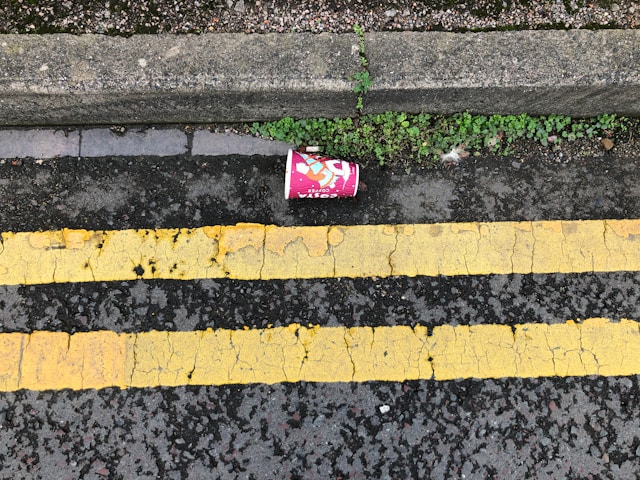Clogged gutter downspouts are a common issue faced by homeowners, especially during seasons of heavy rainfall or falling leaves. Neglecting this problem can lead to serious water damage to your home’s foundation, walls, and landscaping.
However, with a bit of knowledge and some simple tools, you can easily identify and resolve gutter clogs and downspouts before they cause significant damage.
In this guide, we’ll walk you through the process of spotting and fixing a clogged gutter downspout, helping you protect your home and prevent costly repairs.
Identifying a Clogged Gutter Downspout
The first step in addressing a clogged gutter downspout is recognizing the signs. Here are some common indicators that your downspout may be obstructed:
Overflowing Gutters
If you notice water overflowing from your gutters during rainstorms, it’s a strong indication that your downspout is clogged. Instead of efficiently directing water away from your home, the blockage causes water to back up and spill over the sides of the gutter.
Sagging Gutters
Excessive weight from trapped debris and standing water can cause your clogged downspout to accumulate debris in the gutters, adding extra weight and causing them to sag or pull away from the roofline. This not only affects the functionality of your gutter system but also poses a safety hazard.
Pooling Water Around the Foundation
Another telltale sign of a clogged gutter downspout is pooling water around the foundation of your home. As water spills over the sides of the gutters, it can accumulate near the foundation, increasing the risk of basement flooding and structural damage.
Visible Debris in Downspouts
During a visual inspection of your gutters and downspouts, keep an eye out for any visible signs of debris accumulation. Leaves, twigs, and other debris can easily get lodged in the downspout, obstructing the flow of water.
Stained Siding or Exterior Walls
Water stains or streaks down your external walls may be a sign that your downspout is clogged, which is preventing water from leaving your house properly. If you ignore this problem, moisture may leak into your walls and cause structural damage and the formation of mold.
Plant Growth in Gutters
Debris accumulation in gutters provides an ideal environment for plant growth. If you notice plants or weeds growing in your gutters, it’s a clear indication that they are clogged and in need of cleaning.
Fixing a Clogged Gutter Downspout
Once you’ve identified a clogged gutter downspout, it’s essential to take action promptly to prevent further damage. Follow these steps to clear the obstruction and restore proper drainage:
Safety First
Make sure you are safe before attempting to unclog a downspout by utilizing a strong ladder and donning the proper protective clothing, such as gloves and safety glasses. When operating at heights, use caution, and never try gutter clearing in inclement weather.
Remove Debris from Gutters
Start by removing any visible debris from the gutters using a gutter scoop or garden trowel. Be thorough in your cleaning techniques, ensuring that all leaves, twigs, and other obstructions are cleared away to allow for proper water flow.
Flush with Water
Once the gutters are free of debris, use a garden hose to flush out the downspout. Direct a steady stream of water into the top of the downspout, working from the highest point of the gutter system downward. This will help dislodge any remaining debris and clear the pathway for water to drain freely.
Use a Plumbing Snake
For stubborn clogs that cannot be cleared with water alone, consider using a plumbing snake or auger to break up the obstruction. Insert the snake into the downspout and rotate it gently to dislodge any trapped debris. Continue feeding the snake into the downspout until the blockage is cleared.
Check for Proper Drainage
After clearing the clog, run water through the gutter system again to ensure that it is draining properly. Monitor the flow of water from the downspout to confirm that there are no remaining obstructions.
Preventing Future Clogs
Once you’ve successfully cleared a clogged gutter downspout, it’s essential to take steps to prevent future obstructions. Here are some tips for maintaining clean and functional gutters:
Install Gutter Guards
Gutter guards are designed to prevent leaves, twigs, and other debris from entering your gutters, reducing the risk of clogs. Consider installing gutter guards to streamline your gutter maintenance routine and protect against future blockages.
Regular Cleaning
Make gutter cleaning a regular part of your home maintenance routine, especially during the fall when leaves are most likely to accumulate. Remove debris from the gutters and downspouts at least twice a year to prevent clogs and ensure proper drainage.
Trim Overhanging Branches
Overhanging branches can drop leaves and twigs into your gutters. This raises the risk of clogs. Trim back any branches that hang over your roof to minimize the amount of debris entering your gutter system.
Monitor Downspout Extensions
Make sure downspout extensions are installed correctly. They should direct water away from your home’s foundation. Check for any signs of damage or blockages in the extensions and repair or replace them as needed. This will prevent excess water from seeping into your basement or causing foundation damage.
Inspect for Leaks
Regularly inspect your gutters for any leaks, cracks, or holes. These can cause water to leak and pool in areas around your home, leading to potential water damage. If you notice any issues, make sure to repair them promptly.
Maintaining a Clog-free Gutter System
Clogged gutter downspouts can lead to a host of problems for homeowners, from water damage to structural issues. By learning how to spot the signs of a clog and taking proactive steps to address it, you can protect your home and prevent costly repairs.
Remember to prioritize safety when working on your gutters. Consider buying gutter guards to stop future clogs. By doing regular maintenance and paying attention to detail, you can keep your gutter system working well. This will protect your home from damage caused by a clogged downspout.
Whatever the question may be, we’re your source for all the answers. Check out our blog to discover even more insightful and informative content today!










